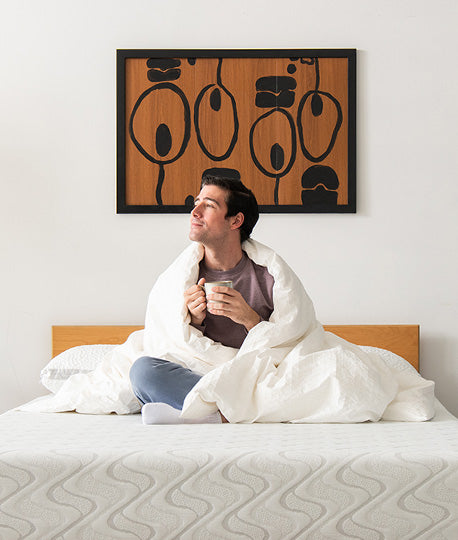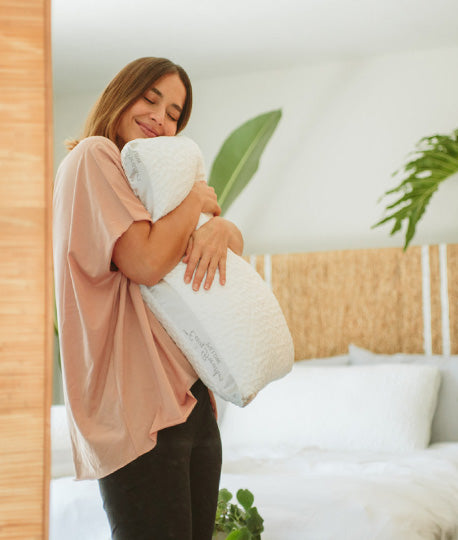How to Find Your Perfect Comforter: 7 Easy Tips

Our beds are one of the places we spend the most time and one that tends to be most overlooked. We spend about a third of our time every day in bed, but still, we suffer through scratchy sheets, thin comforters, and lump pillows.
You deserve better, and one way to start improving your sleep quality is to get a new comforter.
If you don’t know what to look for, all comforters can start to look the same. But there are lots of factors that can help you find the perfect one for your sleep style.
Read on to learn more.
Quilt vs. Comforter vs. Duvet
The first thing you need to know when picking a comforter is what the differences are between that, a quilt, and a duvet.
A quilt is generally one solid fabric blanket with a little batting inside, but nothing else. It can be good for warmer nights or for placing over a duvet on colder nights.
A duvet is a solid white piece of bedding that can be filled with down or down alternative, and it’s much warmer than a quilt. You may find duvet covers that allow you to change the color, pattern, and even material of your bedding.
A comforter is similar to a duvet in construction; it’s generally made of relatively thin fabric filled with down or down alternative.
But unlike a duvet, a comforter has the patterned outside attached as the outer layer, not as a separate piece.
Choosing a Color
When you start shopping for comforters, a good place to start is by deciding what color you want to use.
This will depend mostly on the color scheme of your room. Once you’ve narrowed down a color family, you can start looking for covers that come in that color.
You may want to choose a comforter that contrasts with the rest of the colors of your room to make your bed a strong focal point.
So if you have a green room, look for a red one, and if you have a blue room, look for an orange one.
You may also prefer to stay in the same color family, pairing a cool-colored comforter with a cool-colored room or sticking within a monochromatic theme.
Thread Count
We all know that thread count in sheets is important, but it’s just as important in choosing a comforter. In general, cover exteriors tend to be made of cotton, unless they’re some sort of specialized material.
With cotton goods, thread count refers to how many threads are contained in a square inch of fabric.
Thread count is important in bedding because the higher the thread count, the softer the material. But in comforters, it serves an extra purpose.
The higher the thread count, the tighter the weave, and the tighter the weave, the less chance there is of your stuffing leaking out.
Warmth Options
Once you get past the basics of color and thread count, you start getting down into the more specialized options.
For instance, you may not realize that there are different warmth options in the comforters you buy. These range from super lightweight to ultra-warm weight.
Some of this warmth is tied to actual weight – the heavier a comforter is, the warmer it is.
These may use an extra down filling or different sorts of heavier, more insulating material. Take into consideration what temperature you like to keep your room at and how cold it is where you live when selecting the right warmth for you.
Down vs. Down Alternative
In general, there are two basic types of comforter filling: down and down alternative.
Down is the traditional filling made of duck and goose down, the light, fluffy feathers that keep these birds warm. It’s hard to beat down for lightweight warmth and amazing breathability.
But some people prefer to avoid down in their bedding. This may be due to allergy concerns or moral qualms about how down is harvested.
In either case, you can find plenty of down alternative options, synthetic materials that mimic the feel of down.
You may also find cotton- or wool-filled comforters if you want something heavier than down.
Fill Power
You may also see a rating of the comforter’s fill power listed with the product information. Fill power refers to how much space one ounce of the down occupies.
In other words, it’s a measure of the fluffiness of the down; the higher the fill power, the thicker and warmer the bedding.
For summer nights or warm rooms, go for a comforter with a fill power of 400 or below.
Throughout the year, look for 400 to 600 fill power, and if you like your room cold, go for 600 to 800 fill power. If it’s very cold where you live or you get cold easily, look for 800 fill power and above.
Construction
There are a few different ways comforters are constructed to hold the down in place. These covers aren’t just large sacks stuffed with feathers or other materials.
If they were, the stuffing would slide off of you and do no good in keeping you warm.
The best comforters have a baffle box construction, a grid of little stuffing-filled pockets that keep maximum loft while holding the filling in place.
Quilt stitching uses this same checkerboard pattern but doesn’t have the reinforcing fabric strips to help keep that high-power loft.
Gusset walls are a variation on baffle box construction that actually have vertical fabric walls in the comforter to keep maximum height and coziness.
Find the Perfect Comforter
Finding the perfect comforter is a matter of knowing what you want your sleep experience to be like.
If you like to sleep in a cold room under piles of blankets, look for a high warmth weight, high fill power, gusset wall comforter. If you don’t like being under so much bedding, look for lower warmth weight and fill power and a quilt stitching construction.
If you’d like to find the best comforters on the market, check out the rest of our site at Nest Bedding.
We’re here to help you love where you sleep, nap, and snuggle even more.
Shop our bedding and treat yourself to a better night’s sleep today.




